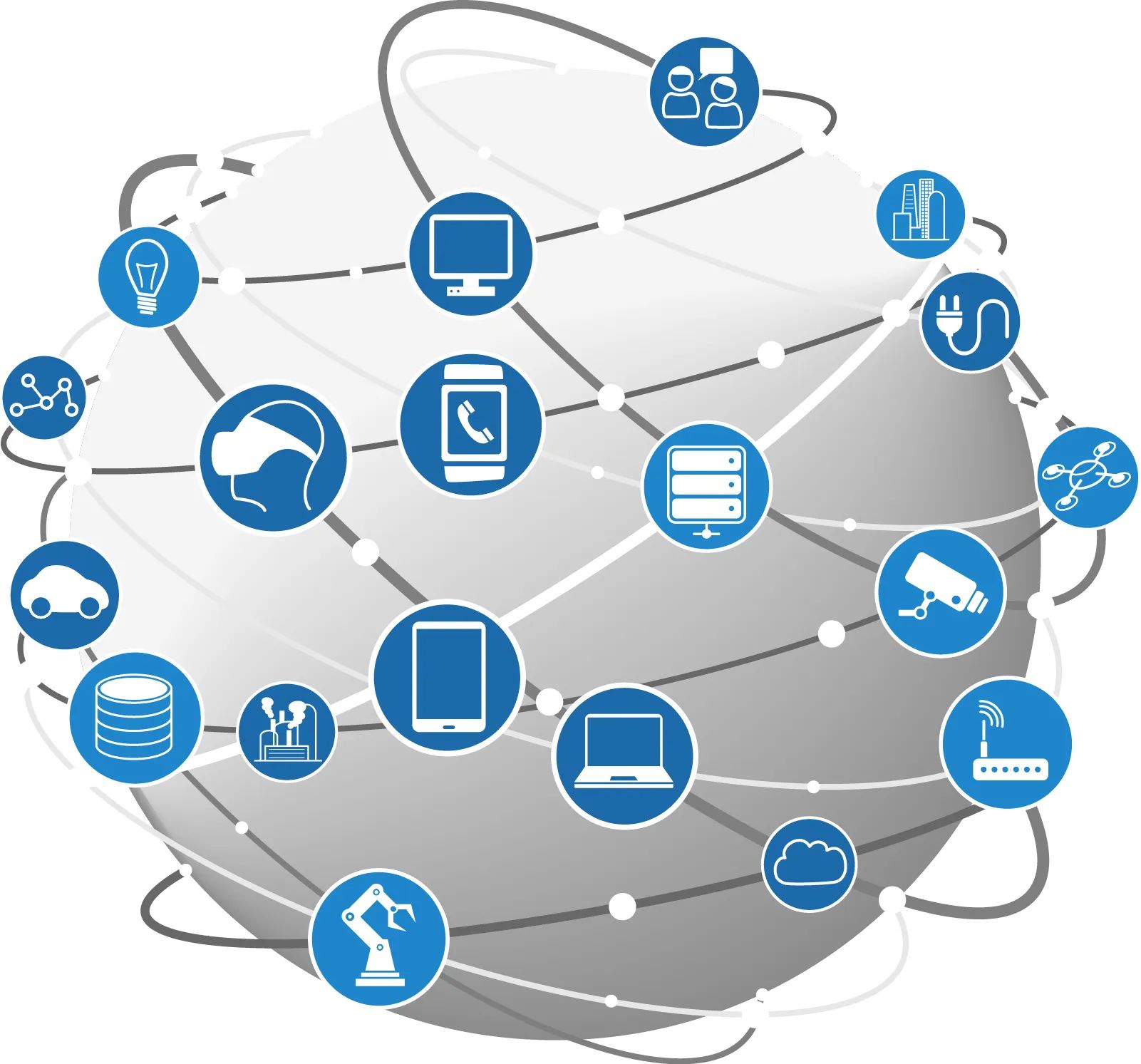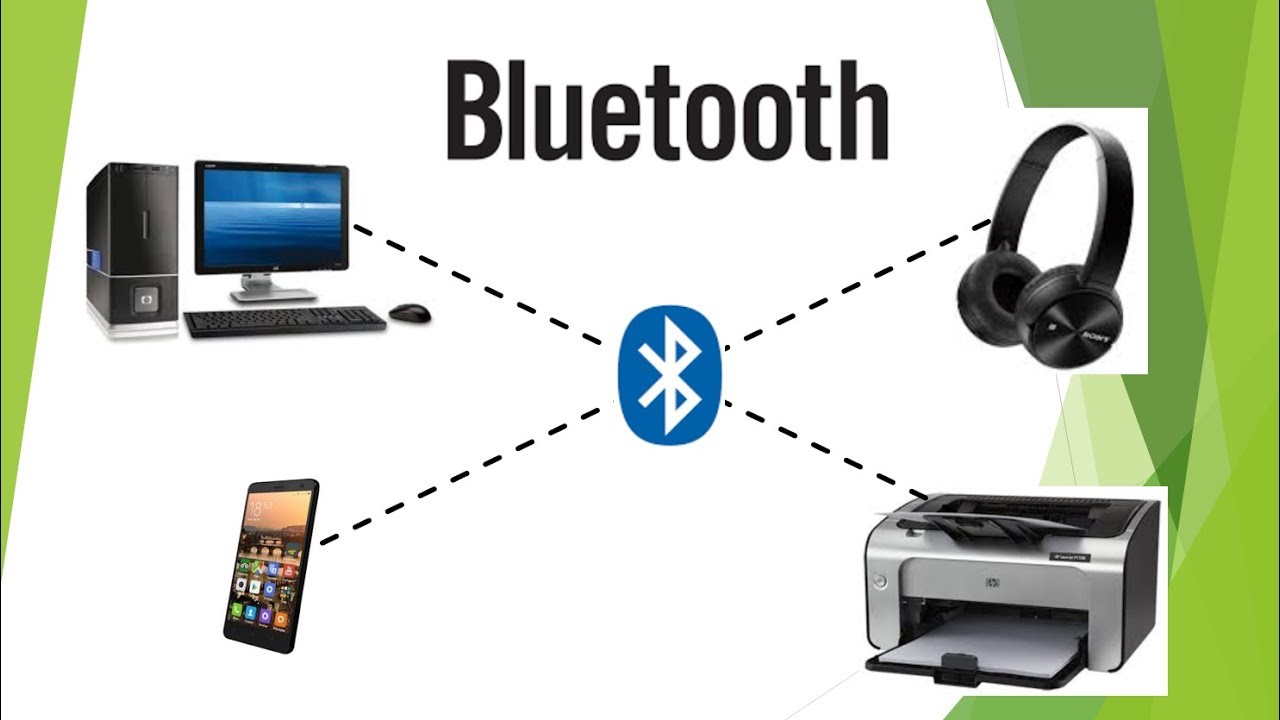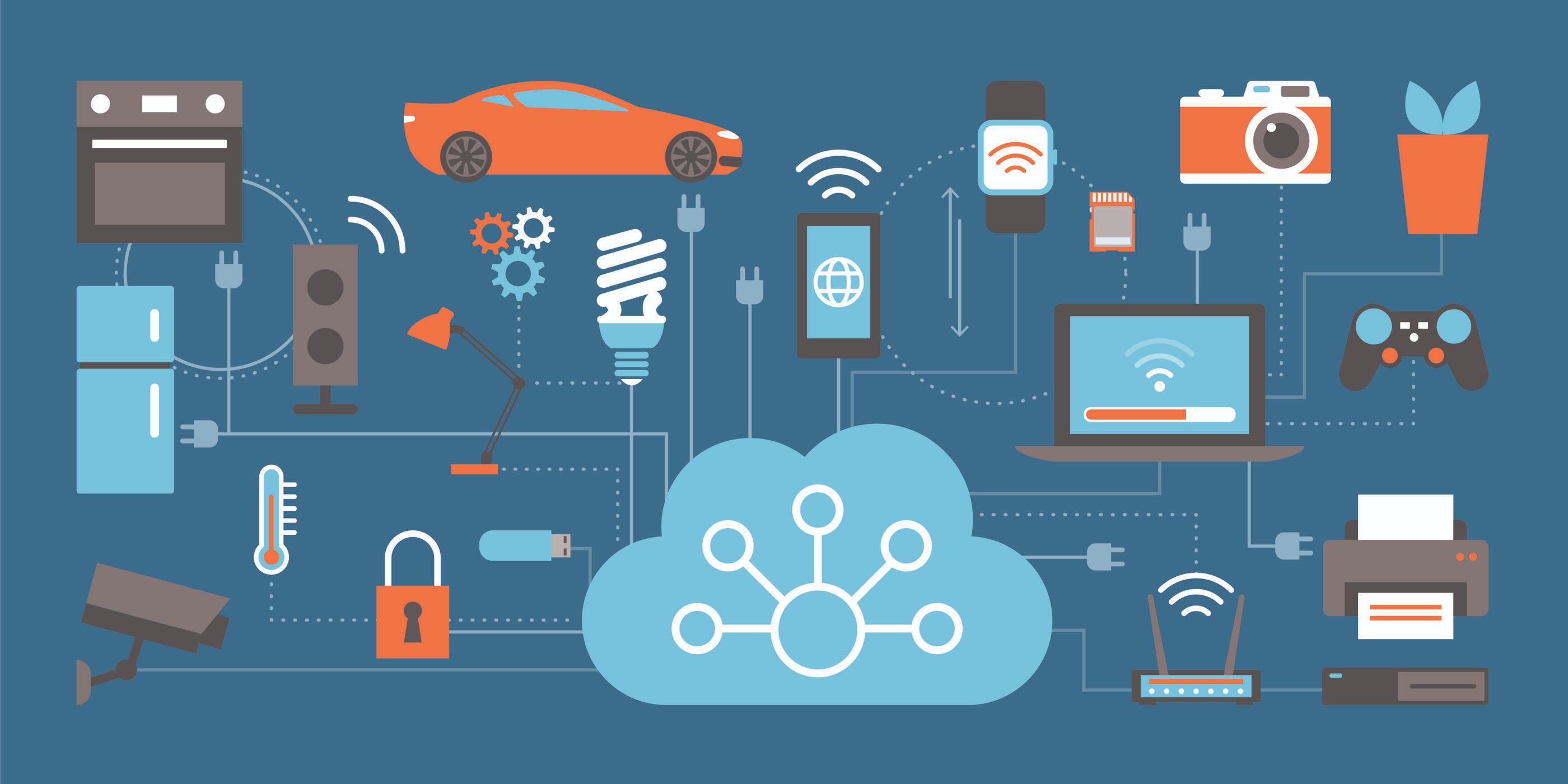Introduction
With the rapid growth of internet-connected devices, the Internet of Things (IoT) has become a pervasive force in our daily lives. From smart homes to industrial automation, IoT devices require efficient communication protocols to send and receive data. In this article, we will explore the two protocols that are most commonly used with IoT devices: MQTT (Message Queuing Telemetry Transport) and CoAP (Constrained Application Protocol).
IoT protocols play a crucial role in enabling devices to securely exchange information and interact with each other. These protocols facilitate communication between IoT devices, allowing them to transmit real-time data, status updates, and commands. By using specific protocols, IoT devices can connect to the internet and seamlessly communicate with servers, gateways, and other devices in the IoT ecosystem.
Choosing the right protocol for your IoT deployment is essential to ensure efficient, reliable, and secure communication. In the following sections, we will delve into the details of MQTT and CoAP, discussing their features, benefits, and use cases. By understanding the strengths and weaknesses of these protocols, you’ll be better equipped to decide which one suits your specific IoT application.
So, let’s dive in and explore the world of MQTT and CoAP, two of the most popular protocols used in the realm of IoT.
IoT Protocols: A Brief Overview
IoT protocols serve as the foundation for communication between devices in an IoT network. These protocols ensure that data can be transmitted reliably and securely across various IoT devices, gateways, and servers. In this section, we will provide a brief overview of the two most commonly used IoT protocols: MQTT and CoAP.
MQTT (Message Queuing Telemetry Transport): MQTT is a lightweight, publish-subscribe-based messaging protocol designed for systems with limited resources. It operates on top of the TCP/IP protocol and is known for its simplicity, efficiency, and low overhead. MQTT utilizes a broker-based architecture, where devices publish messages to a central broker, which then distributes them to subscribed devices. This decoupled architecture enables efficient and scalable communication in IoT networks. MQTT supports Quality of Service (QoS) levels, ensuring reliable message delivery even in challenging network conditions. It has become the de facto standard for many IoT applications, including home automation, asset tracking, and remote monitoring.
CoAP (Constrained Application Protocol): CoAP is a lightweight protocol specifically designed for resource-constrained IoT devices, such as small microcontrollers and wireless sensor networks. Similar to MQTT, CoAP follows a client-server model, where devices make requests to servers and receive responses. It operates over the UDP protocol, making it suitable for environments with limited bandwidth or intermittent connectivity. CoAP leverages the Representational State Transfer (REST) architecture, allowing devices to interact with resources using familiar HTTP-like methods (GET, POST, PUT, DELETE). CoAP is commonly used in applications that require real-time data exchange, such as industrial monitoring, smart energy management, and wearable devices.
Both MQTT and CoAP offer distinct advantages and are widely adopted for different IoT use cases. In the next section, we will delve deeper into the features, characteristics, and comparison of these protocols to help you make an informed decision when choosing the most suitable protocol for your IoT deployment.
Protocol 1: MQTT (Message Queuing Telemetry Transport)
MQTT (Message Queuing Telemetry Transport) is a lightweight and efficient messaging protocol that has gained incredible popularity in the realm of IoT. Developed by IBM in the late 1990s, MQTT was designed to address the challenges of connectivity and efficiency in constrained environments.
One of MQTT’s key features is its publish-subscribe architecture, which allows devices to publish messages to a central broker. Subscribed devices then receive these messages from the broker, enabling efficient distribution of information in an IoT network. This decoupled communication model enhances scalability, as devices can easily join or leave the network without affecting the overall system.
MQTT’s lightweight nature ensures minimal network and processing overhead. It uses a binary protocol format, which reduces the amount of data transmitted, making it suitable for low bandwidth or unreliable network connections. Additionally, MQTT offers different Quality of Service (QoS) levels, ensuring reliable delivery of messages even in challenging network conditions.
The protocol supports three QoS levels:
- QoS 0: At most once delivery. Messages are sent once without any confirmation. This level offers low overhead but does not guarantee message delivery.
- QoS 1: At least once delivery. Messages are sent and acknowledged by the recipient. In the case of network disruptions or failures, messages may be duplicated.
- QoS 2: Exactly once delivery. Messages are sent, acknowledged, and guaranteed to be delivered only once. This level ensures the highest level of reliability but introduces more overhead.
MQTT’s versatility extends beyond its publish-subscribe model and QoS levels. It supports features such as session persistence, which allows clients to resume previous connections and maintain their subscriptions. This is especially useful in scenarios where devices might experience intermittent connectivity, such as remote monitoring applications.
MQTT has found widespread adoption in various IoT applications, including smart homes, industrial automation, and telemetry in remote locations. Its simplicity, efficiency, and support for constrained environments have made it a preferred choice for many developers and organizations in the IoT ecosystem.
In the next section, we will explore the second protocol, CoAP, and compare its features with MQTT to provide a comprehensive understanding of the two options available for IoT communication.
Protocol 2: CoAP (Constrained Application Protocol)
CoAP (Constrained Application Protocol) is a lightweight and efficient protocol specifically designed for resource-constrained IoT devices. CoAP aims to provide a simple and scalable method for devices to interact with each other and access resources over the internet.
One of the key characteristics of CoAP is its ability to operate over constrained networks, such as those with low bandwidth, limited processing power, and intermittent connectivity. CoAP achieves this by using the User Datagram Protocol (UDP) as its underlying transport protocol instead of the more resource-intensive Transmission Control Protocol (TCP), which is commonly used by other protocols like HTTP.
CoAP follows a client-server model, where devices act as clients and interact with CoAP servers. These devices can make requests to the server, such as retrieving or updating resources, by using familiar HTTP-like methods, including GET, POST, PUT, and DELETE. This RESTful architecture allows for easy integration with existing web technologies.
One of CoAP’s notable features is its support for lightweight message formats. CoAP messages are based on the efficient binary format, reducing the size of data transmitted over the network. This is crucial for IoT devices with limited bandwidth capabilities, ensuring that communication is optimized and resources are utilized efficiently.
CoAP also includes built-in support for features like multicast communication, which allows a single message to be sent to multiple devices simultaneously. This is particularly useful in scenarios where devices need to receive the same information, such as group notifications or coordinated actions.
In terms of reliability, CoAP offers a configurable reliability layer using an acknowledgement mechanism. Devices can choose the level of reliability required for each message, allowing trade-offs between efficiency and guaranteed delivery. Additionally, CoAP supports caching, allowing frequently accessed resources to be stored and retrieved quickly, reducing network traffic and improving response times.
CoAP has found applications in various IoT domains, including industrial automation, smart energy management, and smart cities. With its lightweight nature, RESTful architecture, and support for constrained networks, CoAP provides an effective protocol for communicating with resource-constrained devices in IoT deployments.
Now that we have explored both MQTT and CoAP in detail, the next section will provide a comparison of these protocols, helping you choose the most suitable one for your IoT application.
Comparison of MQTT and CoAP
When it comes to choosing the right IoT protocol, it’s important to compare the features, characteristics, and use cases of MQTT and CoAP. While both protocols serve the purpose of facilitating communication between IoT devices, they have some key differences that make them better suited for specific applications.
Architecture: MQTT follows a publish-subscribe architecture, where devices publish messages to a central broker, and subscribed devices receive those messages from the broker. On the other hand, CoAP uses a client-server model, where devices interact directly with CoAP servers using HTTP-like methods.
Transport Protocol: MQTT operates on top of the TCP/IP protocol, ensuring reliable and ordered delivery of messages. CoAP, on the other hand, uses the UDP protocol, which reduces overhead and is suitable for unreliable or low-bandwidth networks.
Message Size: MQTT messages are typically larger due to the overhead of the TCP/IP protocol and its header structure. CoAP messages, on the other hand, are smaller in size due to CoAP’s efficient binary message format and its use of UDP.
QoS Levels: MQTT supports three levels of Quality of Service (QoS), allowing devices to choose between different levels of message delivery reliability. CoAP, on the other hand, provides a simpler reliability mechanism and does not have different QoS levels.
Resource Limitations: MQTT is well-suited for applications with more powerful devices and stable network connections, as it offers additional features like session persistence and last will and testament messages. CoAP, with its lightweight design and support for constrained networks, is better for resource-constrained devices and environments.
Integration: MQTT integrates well with existing enterprise messaging systems, making it suitable for scenarios that require seamless integration with backend systems. CoAP’s RESTful architecture allows for easy integration with web technologies and promotes interoperability with existing HTTP infrastructure.
Choosing between MQTT and CoAP depends on factors such as the nature of your IoT deployment, the resource limitations of your devices, the reliability requirements, and the need for integration with existing systems. It’s important to consider these factors and evaluate which protocol aligns best with your specific use case.
In the next section, we will explore the factors you should consider when choosing between MQTT and CoAP, helping you make an informed decision for your IoT application.
Factors to Consider When Choosing Between MQTT and CoAP
When selecting the appropriate protocol for your IoT application, there are several factors to consider to ensure optimal communication and functionality. Here are some key factors to consider when choosing between MQTT and CoAP:
- Device Resource Limitations: MQTT is well-suited for devices with larger processing capabilities and stable network connections. If your IoT deployment involves resource-constrained devices with limited power and bandwidth, CoAP may be a better fit due to its lightweight design.
- Reliability and QoS Requirements: Consider the level of reliability needed for your IoT application. MQTT offers three levels of Quality of Service (QoS): at most once, at least once, and exactly once. CoAP, on the other hand, provides a simpler reliability mechanism. Evaluate the importance of guaranteed message delivery and choose the appropriate protocol accordingly.
- Compatibility and Integration: MQTT integrates well with existing enterprise messaging systems and has wide support across platforms. CoAP, with its RESTful architecture, seamlessly integrates with web technologies and existing HTTP infrastructure. Consider your existing systems and the level of integration required for your IoT deployment.
- Message Size and Overhead: Assess the size of the messages transmitted in your IoT application. MQTT messages are typically larger due to the overhead of TCP/IP and its header structure. CoAP messages, on the other hand, are smaller due to the efficient binary message format and its use of UDP. Consider the network bandwidth and data consumption of your IoT devices.
- Application Use Cases: Take into account the specific requirements and use cases of your IoT application. MQTT is commonly used in scenarios such as home automation, asset tracking, and remote monitoring. CoAP is often leveraged in industrial automation, smart energy management, and wearable devices. Evaluate the design goals and strengths of each protocol to align with the needs of your application.
By considering these factors, you can make a more informed decision on whether MQTT or CoAP is better suited for your specific IoT deployment. It’s important to thoroughly assess the requirements, limitations, and goals of your application to choose the protocol that will maximize the efficiency, reliability, and scalability of your IoT network.
In the following section, we will explore real-world case studies that showcase the practical applications and benefits of both MQTT and CoAP.
Case Studies: Real-World Applications of MQTT and CoAP
To understand the practical applications and benefits of MQTT and CoAP, let’s explore some real-world case studies showcasing the successful implementation of these protocols in various IoT applications.
Case Study 1: Smart Home Automation with MQTT: MQTT has gained significant popularity in the realm of smart home automation due to its lightweight nature and efficient communication. In a smart home scenario, devices such as thermostats, lights, and security cameras can publish real-time data to an MQTT broker. Subscribed devices, such as smartphones or voice assistants, receive these updates and can control and monitor the devices remotely. MQTT enables seamless, reliable, and near real-time communication between devices, providing homeowners with enhanced control and convenience.
Case Study 2: Industrial Monitoring with CoAP: CoAP is widely used in industrial automation and monitoring applications where real-time data exchange and resource-constrained devices are prevalent. In an industrial setting, sensors and actuators can communicate with CoAP servers, providing real-time monitoring and control over various processes. CoAP’s lightweight design and support for constrained networks make it an ideal choice to monitor machine status, track energy consumption, and enable predictive maintenance in industrial environments.
Case Study 3: Wearable Devices with CoAP: CoAP has found application in the growing market of wearable devices, where resource limitations and intermittent connectivity are common challenges. Wearable devices, such as fitness trackers and smartwatches, can use CoAP to communicate with servers and share data related to the user’s activity, heart rate, and sleep patterns. CoAP’s lightweight messaging and ability to operate over constrained networks ensure minimal power consumption and efficient data transmission, supporting the seamless integration of wearable technology into users’ daily lives.
These case studies illustrate the versatility and effectiveness of both MQTT and CoAP in real-world IoT applications. MQTT excels in scenarios requiring efficient, reliable messaging and seamless integration, such as smart home automation. CoAP, on the other hand, is well-suited for resource-constrained devices and applications that prioritize lightweight communication protocols, such as industrial monitoring and wearable devices.
It’s important to note that the choice between MQTT and CoAP ultimately depends on the specific requirements and constraints of your IoT application. By analyzing similar use cases and evaluating the strengths of each protocol, you can gain valuable insights into how MQTT or CoAP can be applied effectively in your own IoT deployment.
In the final section, we will provide a summary and key takeaways to help you make an informed decision regarding the selection of MQTT or CoAP for your IoT project.
Conclusion
In the world of IoT, selecting the right communication protocol is crucial for ensuring efficient, reliable, and secure communication between devices. In this article, we explored two prominent protocols used in IoT applications: MQTT and CoAP.
MQTT, with its lightweight design, broker-based architecture, and support for different QoS levels, is an excellent choice for scenarios requiring efficient messaging and seamless integration with existing systems. It has found wide adoption in smart home automation, asset tracking, and remote monitoring applications.
CoAP, on the other hand, is specifically designed for resource-constrained IoT devices and applications. With its client-server model, support for constrained networks, and RESTful architecture, CoAP excels in industrial monitoring, smart energy management, and wearable devices.
When choosing between MQTT and CoAP, it is essential to consider factors such as device resource limitations, reliability requirements, integration capabilities, message size, and application use cases. Evaluating these factors ensures that the selected protocol aligns with the specific needs and constraints of your IoT deployment.
Throughout the article, we explored the features, characteristics, and real-world case studies that showcased the practical applications of MQTT and CoAP. We highlighted their strengths and weaknesses to help you make an informed decision regarding their suitability for your IoT project.
Remember, selecting the right protocol is just one aspect of a successful IoT deployment. It is equally important to consider other factors like security, scalability, and compatibility with your existing infrastructure.
In conclusion, MQTT and CoAP are both powerful protocols that have been proven effective in a wide range of IoT applications. By understanding their features, comparing their capabilities, and analyzing your specific requirements, you can make an informed decision that ensures the success of your IoT project.

























